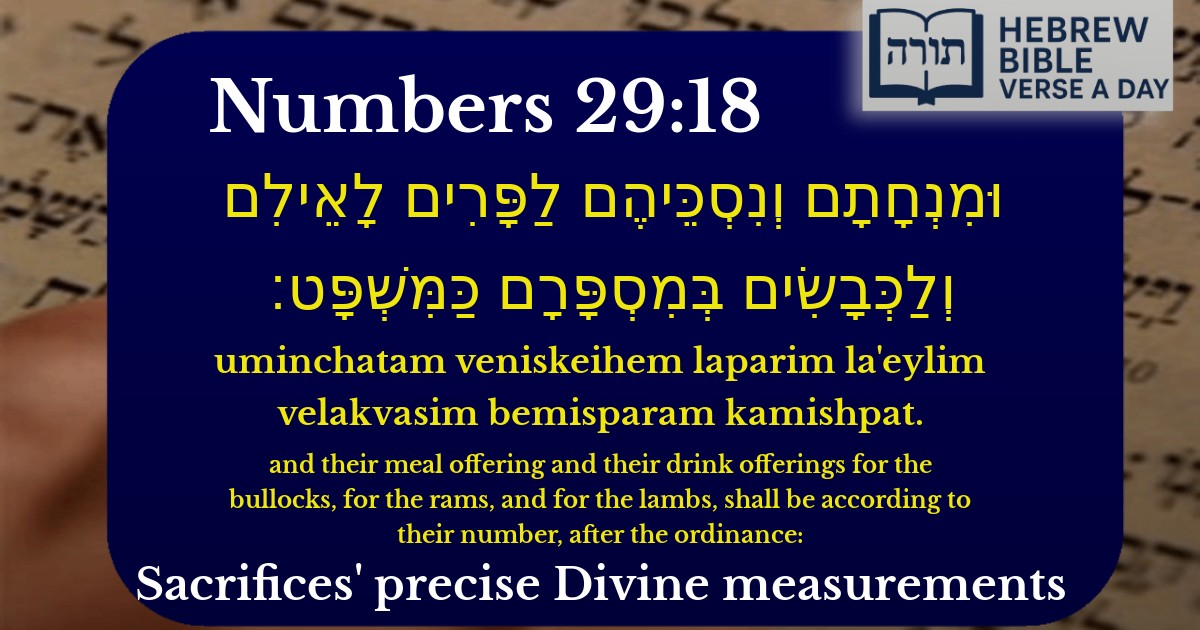Join Our Newsletter To Be Informed When New Videos Are Posted
Join the thousands of fellow Studends who rely on our videos to learn how to read the bible in Hebrew for free!
Hebrew Text
וּמִנְחָתָם וְנִסְכֵּיהֶם לַפָּרִים לָאֵילִם וְלַכְּבָשִׂים בְּמִסְפָּרָם כַּמִּשְׁפָּט׃
English Translation
and their meal offering and their drink offerings for the bullocks, for the rams, and for the lambs, shall be according to their number, after the ordinance:
Transliteration
Uminchatam veniskeihem laparim la'eylim velakvasim bemisparam kamishpat.
Hebrew Leining Text
וּמִנְחָתָ֣ם וְנִסְכֵּיהֶ֡ם לַ֠פָּרִ֠ים לָאֵילִ֧ם וְלַכְּבָשִׂ֛ים בְּמִסְפָּרָ֖ם כַּמִּשְׁפָּֽט׃
Parasha Commentary
📚 Talmud Citations
This verse is not quoted in the Talmud.


Context in the Torah
The verse (Bamidbar 29:18) appears in the section detailing the korbanot (sacrifices) brought during the festival of Sukkot. It specifies the meal offerings (mincha) and drink offerings (nesech) accompanying the animal sacrifices—bullocks, rams, and lambs—each according to their prescribed quantities.
Rashi's Explanation
Rashi (Bamidbar 29:18) clarifies that the phrase "כַּמִּשְׁפָּט" ("after the ordinance") refers to the earlier Torah commandment in Bamidbar 15:4-12, which establishes the fixed measurements for meal and drink offerings corresponding to each type of animal sacrifice. For example:
Rambam's Halachic Perspective
In Hilchos Maaseh HaKorbanos (2:1-5), the Rambam codifies these measurements as binding halacha. He emphasizes that deviations from these quantities invalidate the offering, underscoring the precision required in divine service.
Midrashic Insight
The Midrash Tanchuma (Pinchas 14) connects the descending quantities (3-2-1) to humility: just as the measures decrease, so too must one diminish pride when approaching Hashem. The bullock, representing strength, requires the largest offering, while the lamb, symbolizing meekness, needs the least.
Symbolism in the Offerings
Rabbeinu Bachya (Bamidbar 29:18) notes that the mincha (meal offering) signifies human effort (ground grain), while the nesech (wine libation) represents joy. Together, they teach that divine service requires both labor and heartfelt devotion.